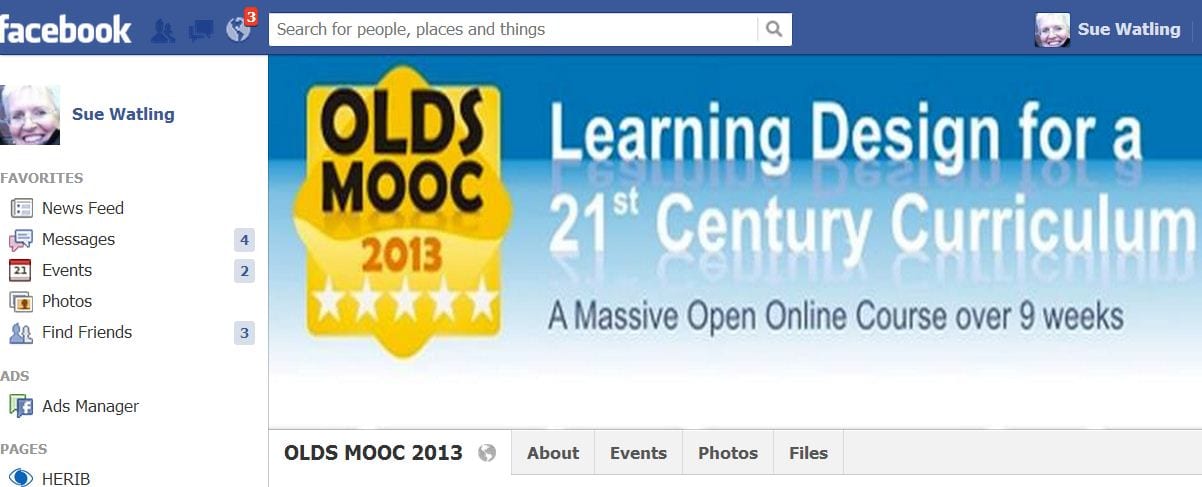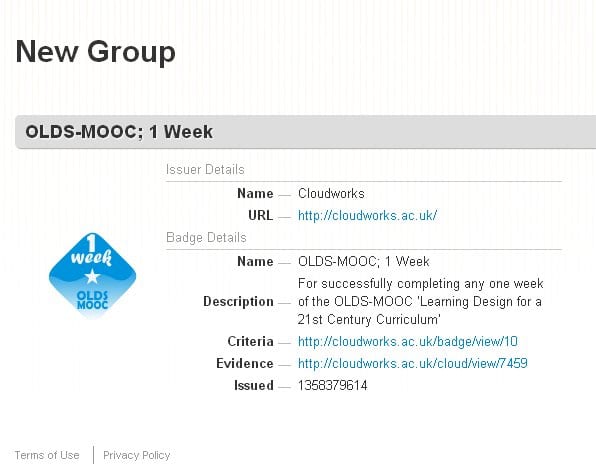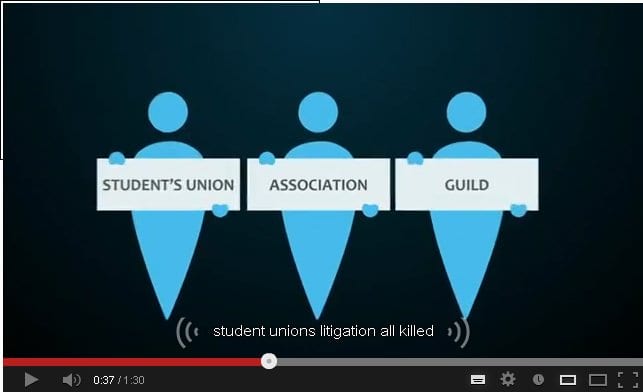At the end of week 1 I’ve tried to follow the activities http://www.olds.ac.uk/the-course/week-1 It hasn’t been easy to find a way through the different technologies. This in itself has been an interesting experience. It’s good to step outside your comfort zone and one way to engage with new ways of working is to have a definite task in mind. My proposal is the development of DIY approach to Multimedia. This aligns with an on going project, so OLD with audio and video is relevant to me. My work role is to find ways to support people to use technology for education and I worry that here on OLDsMOOC I’ve been unable to translate the initial interest in my proposal into a working team. Cloudworks seems unnecessarily complex with too many ways of doing things resulting in information being scattered with no obvious mechanism for pulling it all together and establishing a single communication channel. I’ve tried to understand Cloudworks. My cloud profile and links to my clouds and cloudscape is here http://cloudworks.ac.uk/user/view/4427
I set up an alternative area for DIY Multimedia on Google Groups, this is here https://groups.google.com/forum/?fromgroups#!forum/olds-mooc-diy-multimedia
Open education is part of my role at Lincoln. Having just completed a 12 month JISC/HEA OER Change Academy programme, I’d suggest engagement with the philosophy and practice of OER comes before MOOCS. With OER you can have a more gentle and less public introduction but OER practice requires a sophisticated use of the internet and attention to specific digital literacies and MOOCs even more so. A key issue for me after this first week of OLDsMOOC is how many people may have tried and been defeated by the barrier of the technology. Rather than celebrating the affordances of online learning, this MOOC may have confirmed individual techno-fears and widened existing digital divides rather than helped bridge them. The spectrum of engagement with digital practices is wide. Many late adopters on the far side benefit from scaffolded approaches to increasing their digital confidence. Too often the technology is presented and users left to get on with it; reminiscent of early days of the VLE when attention was paid to the embedding of the technology and systems rather than the changes in practice necessary to shift from face to face to digital ways of working. OLDsMOOC has been a bit like these.
This is my OLDsMOOC story so far. I’ve been trying out MOOCs for some time and blogging about it herehttps://suewatling.blogs.lincoln.ac.uk where there are also OLDsMOOC musings and reflections. I’m looking forward to Week2 and to working with colleagues who have found there way onto the DIY Multimedia Google Group. Those who made initial contact and are still out there – I hope our paths cross again in one way or another.
Having posted this on yet another cloud http://cloudworks.ac.uk/cloud/view/7459 and added it to the Refelction Cloudscape http://cloudworks.ac.uk/cloudscape/view/2787, I’ve applied for my first ever MOOC badge – and am waiting for approval…
Working with teams of staff developing OER for the past year http://oer.lincoln.ac.uk) I find engagement with openess demands a sophisticated understanding of the internet so is useful for developing digital literacies, but also making work freely available under a creative commons licence encourages the revisiting of learning design principles and practices. The smaller scale of OER reduces the massiveness of the MOOC so can be a useful starting point with online design..
Afterthoughts
Working with teams of staff developing OER for the past year
http://oer.lincoln.ac.uk) I find engagement with openess demands a sophisticated understanding of the internet so is useful for developing digital literacies, but also making work freely available under a creative commons licence encourages the revisiting of learning design principles and practices. The smaller scale of OER reduces the massiveness of the MOOC so can be a useful starting point with online design..
Learning design with multimedia must include attention to accessibility and inclusion. Making sure content is provided in alternative formats is something to be considered at the beginning of the process, e.g. transcripts, captions, subtitles etc, and not bolted on as an after thought at the end (see TechDis for advice and guidance). This process needs to be meaningful otherwise the result becomes tokenistic. See
https://suewatling.blogs.lincoln.ac.uk/2013/01/16/tokenistic-captions-on-nss-official-video-2013/ for an example of careless attention to these things!
When designing online learning environments build in time for induction, finding your way around and making sure everyone in familiar with the channels of communication. This can help people disappearing before the fun begins 🙂
Oh and the ethics of using multimedia – permissions, consent, copyright, health and safety etc…. more on this to follow


